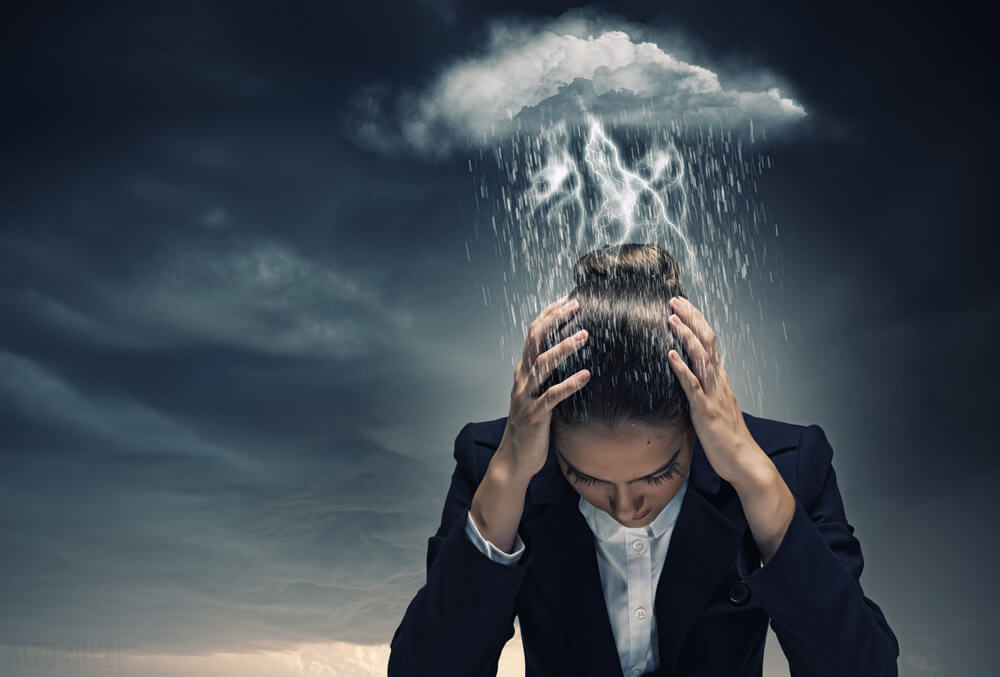Bipolar Disorder: What Is It Really Like?


Written and verified by the psychologist Gema Sánchez Cuevas
Popular or “street” psychology has defined bipolar disorder as one where people have frequent and uncontainable mood swings. First they’re sad, then they’re happy, then they’re angry, then they’re calm. But this isn’t completely true – bipolar disorder must be defined more accurately and in more detail.
There are two forms of bipolar disorder: type I and type II. Type I is characterized by manic or euphoric episodes, while type II is characterized by alternating hypomanic and major depressive episodes. Below, we’ll clearly define what this means:
Manic and hypomanic episodes
What is a manic episode?
According to the DSM-5, manic episodes are characterized by a well-defined period of an abnormally and persistently elevated, expansive, or irritable mood and an abnormal or persistent increase in activation or energy.
During a period of at least one week (or of any duration if it’s so acute that they need to be hospitalized), the person spends most of each day in this state, along with at least 3 additional symptoms (decrease in sleep, increase in self-esteem or feelings of grandiosity, excessive participation in risky activities, etc.).
The person’s mood during a manic episode is usually described as euphoric, excessively happy, high, or feeling “on top of the world.” For example, they might spontaneously initiate conversations with strangers, and their thoughts often race faster than they can verbally express.
The person’s mood during a manic episode is usually described as euphoric, excessively happy, high, or feeling “on top of the world.”
Expansive moods, excessive optimism, grandiosity, and lack of judgement lead to risky behavior, such as overspending, giving away their possessions, reckless driving, foolish investments, and unusual sexual promiscuity. These behaviors usually result in nothing but economic and social losses for the person.
It can be serious enough to cause significant deterioration in their social and professional functioning, require hospitalization, or lead to psychotic symptoms (delusions, hallucinations, etc.).

What is a hypomanic episode?
According to the DSM-5, a hypomanic episode is a well-defined period of an abnormally and persistently elevated, expansive, or irritable mood and an abnormal or persistent increase in activation or energy that lasts for at least four consecutive days.
Compared to a manic episode, a hypomanic episode isn’t serious enough to cause a serious alteration in social or professional functioning, require hospitalization, or lead to psychotic symptoms.
Compared to a manic episode, a hypomanic episode isn’t serious enough to require hospitalization.
Major depressive episode
Depression is well-known to the general population. People use the word colloquially to describe feelings of sadness, melancholy, exhaustion, sleepiness, lethargy, etc. Like we did with manic and hypomanic episodes, now we’re going to see which criteria must be fulfilled in order to diagnose an episode of major depression.
The DSM-5 states that at least five of the following symptoms must be present almost daily and for most of the day over a period of at least 2 weeks. In addition, the person must also present with a depressed mood or a loss of interest or pleasure.
Depressed mood
At least 90% of patients with depression appear sad or dejected. It’s important to ask what their best and worst moments of the day were and if there’s anything that helps them feel better, because those factors are related to those feelings.
Anhedonia
This is the loss of pleasure for daily activities. Nothing makes them feel good, whether it’s going out, seeing family members, or watching TV.
Changes in appetite and/or weight
The criteria used to measure this is an increase or decrease in weight over a period of one month that is 5% over the normal amount, although sometimes it can be difficult to evaluate this symptom.
Sleep disorders
Insomnia has always been considered a symptom of depression, although there’s more doubt over hypersomnia becoming atypical. There are three different types of insomnia which must be explored: transient, acute, and chronic. In addition, it’s important to analyze the how tired the patient is throughout the day, whether their sleep is reparative or not, how long they spend in bed, etc.

A common criterion for transient insomnia is insomnia lasting for less than a week. Acute insomnia is when the patient can’t sleep well for a period of less than a month. Chronic insomnia lasts for longer than a month. There are no set criteria for hypersomnia.
Psychomotor disorders
This refers to psychomotor delays and agitations. In order to be diagnosed, some behavior must manifest that is visible to others.
Loss or lack of energy
Patients sometimes report lacking energy, but it’s really more like a lack of interest.
Excessive self-criticism, guilt, or lack of self-worth
It’s important to ask the patient to describe themselves and then see how they describe their friends and family.
Difficulty concentrating, thinking, or making decisions
Typically, the clinician will ask the patient if they can follow conversations and TV shows, focus on their work, etc.
Recurring thoughts of suicide or death
Between 60 and 80% of suicides are committed by people who have been diagnosed with depression. Having depression increases the risk of suicide by 30% compared to the general population.
When someone displays five or more of these symptoms, that doesn’t automatically mean they’re diagnosed with major depressive disorder. There must also be significant psychosocial deterioration, and their condition must have nothing to do with the effects of a substance or medical condition (such as dementia) or the effects of a normal reaction to grief.
In order to diagnose a major depressive episode, the person must present with a depressed mood or a loss of interest or pleasure.

Characteristics of bipolar disorder type I
Like we stated above, bipolar disorder type I is characterized by the presence of a manic episode. Before or after, there may be hypomanic or major depressive episodes.
During manic episodes, people don’t tend to recognize that they’re sick or understand that they need treatment, and so they vehemently resist it. They tend to change their clothing, makeup, or personal appearance to be more attention-calling or sexually suggestive.
Some patients become aggressive and utter physical threats. If they’re delusional, they might physically attack other people or commit suicide. As a result of their impaired judgment, lack of awareness, and hyperactivity, manic episodes can have catastrophic consequences.
The person’s mood can change rapidly to anger or depression. During manic episodes, depressive symptoms can appear and last for moments, hours, or more rarely, days
Bipolar disorder type I is characterized by the presence of a manic episode.
Risk of suicide in bipolar disorder type I
The DSM-5 estimates that the risk of suicide for patients with bipolar disorder type I is 15 times higher than the general population. It accounts for a quarter of all suicides.

Characteristics of bipolar disorder type II
Bipolar disorder type II is characterized by the presence of a hypomanic episode and a major depressive episode. Manic episodes are exclusive to type I. People with type II generally go to the doctor during a major depressive episode and very rarely complain of symptoms of hypomania. Hypomanic episodes don’t usually lead to dysfunction themselves.
The dysfunction associated with type II is a consequence of the major depressive episodes, a persistent pattern of unpredictable and fluctuating changes in mood, and a pattern of unreliable interpersonal or professional relationships. People with bipolar II might not see their hypomanic episodes as pathological or unfavorable, although their erratic behavior can bother other people.
A common feature of this disorder is impulsively, which can contribute to suicide attempts and substance abuse disorders.
Bipolar disorder type II is characterized by the presence of a hypomanic episode and a major depressive episode.
Risk of suicide in bipolar disorder type II
The DSM-5 states that the risk of suicide is higher in bipolar disorder type II. Around a third of patients with bipolar disorder type II have a history of suicide attempts. Attempts are more lethal for patients with type II than type I.
Bibliography:
American Psychiatric Association. Diagnostic and Statistical Manual of Mental Disorders, 5th Edition: DSM-5. United States, 2013.
This text is provided for informational purposes only and does not replace consultation with a professional. If in doubt, consult your specialist.








